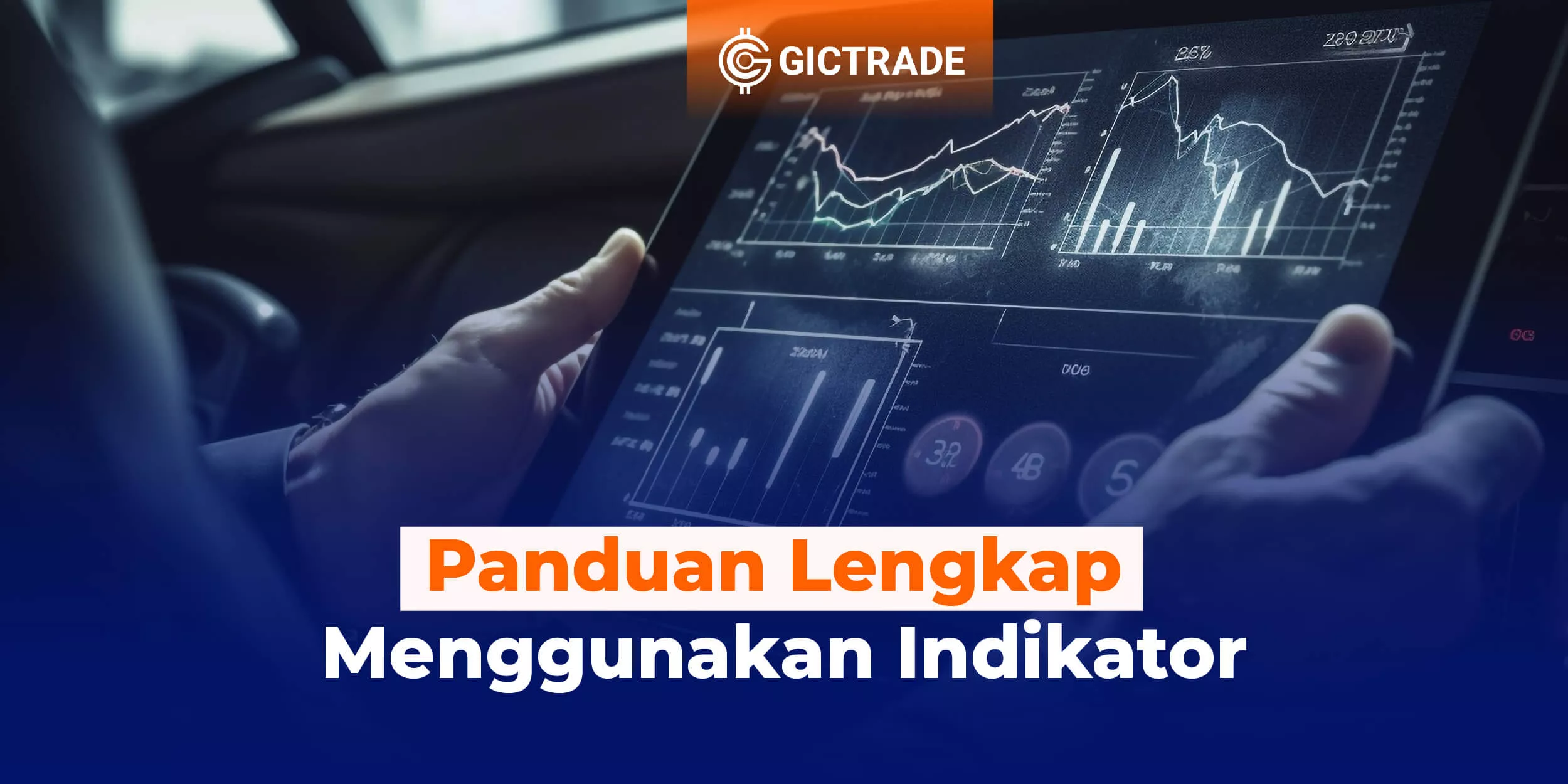Using Indicators in Trading - Trading is an activity that involves market analysis, intelligent decision making, and good strategy. One of the tools that can help you in trading is an indicator. Indicators are technical analysis tools used to identify trends, provide buy or sell signals, and provide other information that is important in making good trading decisions.
In this guide, we will explain in detail about the use of indicators in trading, steps to maximize your profits, and the best strategies you can use. So, let's get started!
Table of Contents
Why Are Indicators Important in Trading?
.webp)
Before we learn how to use indicators, it is important to understand why indicators are so important in trading. Indicators help you analyze the market, identify trends, and provide buy or sell signals. Here are some reasons why indicators are important in trading:
- Trend Identification: Indicators help you identify ongoing market trends. By knowing the direction of the trend, you can make better trading decisions.
- Buy or Sell Signals: Indicators provide buy or sell signals based on market analysis. This helps you know when to buy or sell an asset.
- Confirmation of Price Movement: Indicators can provide confirmation of price movement. This helps you validate your technical analysis before making a trading decision.
- Measuring Market Strength: Some indicators help you measure market strength, such as the relative strength indicator or RSI. This helps you identify whether the market is overbought or oversold.
Types of Indicators in Trading
There are many types of indicators that you can use in trading. Each indicator has different characteristics and calculation methods. Here are some types of indicators that are commonly used:
1. Trend Indicator
Trend indicators help you identify the direction of the market trend. Some examples of commonly used trend indicators are:
2. Indikator Osilator
Oscillator indicators help you identify overbought or oversold market conditions. Some examples of commonly used oscillator indicators are:
3. Volume Indicator
Volume indicators help you measure the volume of trading taking place in the market. Some examples of commonly used volume indicators are:
- Volume Moving Average (VMA)
- On-Balance Volume (OBV)
- Accumulation/Distribution Line
Steps to Use Indicators in Trading
Now that you have a basic understanding of indicators, here are the steps to using indicators in trading:
- Choose the Right Indicator: First of all, choose an indicator that suits your trading style and preferences. Do not use too many indicators, as it can confuse your analysis.
- Understand How Indicators Work: Learn how indicators are calculated and generate signals. Also understand the interpretation of the signals given by the indicators.
- Apply Indicators to Chart: Apply indicators to your trading chart. Adjust the period and settings of the indicators to suit your needs.
- Indicator and Chart Analysis: Analyze the signals given by the indicators and compare them with the price movement on the chart. Look for confirmation and consider other factors before making a trading decision.
- Use Additional Indicators: If necessary, use additional indicators to strengthen your analysis. Combine different indicators to get more complete information.
- Be Patient and Consistent: Stick to the trading rules and strategies you set based on indicator analysis. Be patient in facing market fluctuations and be consistent in implementing your trading strategy.
Trading Strategy Using Indicators
In addition to the steps above, you can also use specific trading strategies by combining certain indicators. Here are some common trading strategies using indicators:
1. Moving Average Crossover Strategy
This strategy involves using two or more moving averages with different periods. A buy signal occurs when a moving average with a shorter period crosses a moving average with a longer period from bottom to top, and vice versa for a sell signal.
2. Divergence Strategy
This strategy involves the use of oscillator indicators, such as the RSI or Stochastic Oscillator. Divergence signals occur when the direction of price movement is not in line with the direction of the indicator movement. This can indicate a potential trend reversal.
3. Support and Resistance Strategy
This strategy involves using trend indicators, such as trendlines or moving averages, to identify support and resistance levels. Buy signals occur when the price approaches a support level, while sell signals occur when the price approaches a resistance level.
Improve your ability in income management by starting trading at GIC! Not only trading, you can also learn about the world of stocks and forex trading if you are a beginner in the world of trading. GIC provides learning services about forex for you to learn, either through educational videos via the GIC Youtube channel or learning about forex through the GIC journal which you can see directly on the website. Start registering now so you can start trading with GICTrade.
FAQ
1. Should I use all types of indicators in trading?
No, you don't have to use all types of indicators in trading. Choose the indicators that suit your trading style and preferences.
2. How many indicators should I use in my analysis?
There is no fixed number. Too many indicators can confuse your analysis. Use indicators that are relevant and sufficient to provide the information you need.
3. Does the indicator always give accurate signals?
No, indicators do not always give accurate signals. It is important to confirm indicator signals with other factors before making a trading decision.
4. Can I combine several indicators in one analysis?
Yes, you can combine multiple indicators to strengthen your analysis. However, be sure not to overcrowd the chart with too many indicators.
5. Should I use the same indicators for all trading instruments?
No, different trading instruments may require different indicators. Choose indicators that suit the characteristics of the instrument you are trading.
6. Is there a best indicator that I should use?
There is no best indicator that suits all traders. Choose an indicator that suits your trading style and preferences.
Conclusion
In this comprehensive guide, you have learned how to use indicators in trading. Indicators are an essential tool in technical analysis and can help you make better trading decisions. Remember to choose indicators that suit your trading style, understand how they work, and always confirm the signals with other factors before making a trading decision. Happy trading!
|
Also Read : 5 Effective Ways to Increase Trading Profits for You |
 Last:
Last: 







